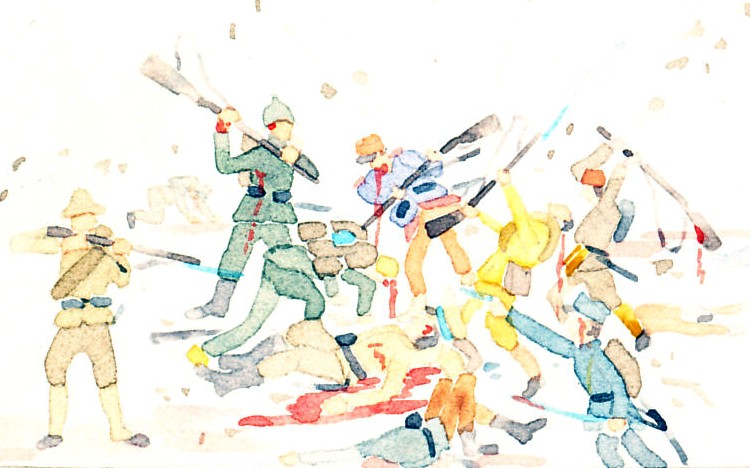No. 1. L'Attaque Brusquée: d'après "le Bystander". The Sudden Attack, August 24, 1914. In French territory, with Luxemburg and much of Belgium behind him, a helmeted Kaiser Wilhelm knocks Joffre back with a powerful uppercut. The western end of the Allied line was held by the British. Their retreat from Mons, Belgium on August 24 brought the full length of the Allied line into France.
From L'Attaque & la Riposte — Originale présentation des phases de la Guerre (The Attack & the Retort — Original Presentation of the Phases of the War)
Ehrmann, Édition Lorraine, a set of six postcards and envelope.
Over maps of the French theater of operations on the western front in 1914 — Luxemburg, Belgium, northern France — cartoon figures of the French and German armies struggle. General Joffre represents the forces he commands. His adversary's upward-pointing mustache indicates Kaiser Wilhelm.
The titles of the cards appear only on the envelope.
1re Série
On the reverse of each card: Carte Postale
Tous les Pays étrangers n'acceptent pas la Correspondance au recto. (Se renseigner a la Poste).
Edition Lorraine

24 Aout d'après "le Bystander" (August 24, after "The Bystander")
[No. 1. L'Attaque Brusquée: d'après "le Bystander". The Sudden Attack, August 24, 1914.
1re Série]
On the reverse of each card: Carte Postale
Tous les Pays étrangers n'acceptent pas la Correspondance au recto. (Se renseigner a la Poste).
Edition Lorraine
Other views:
Larger
